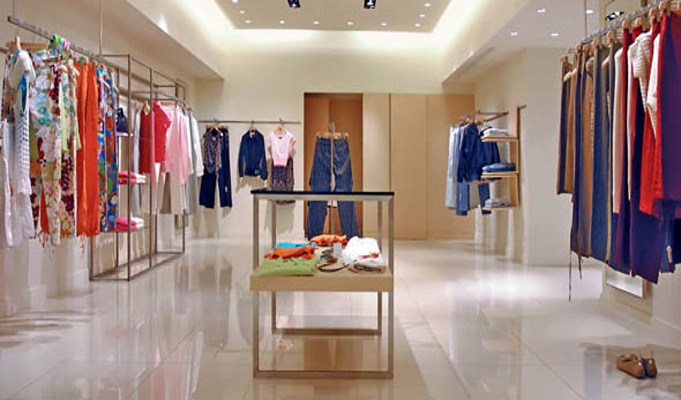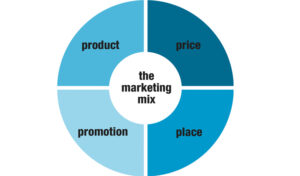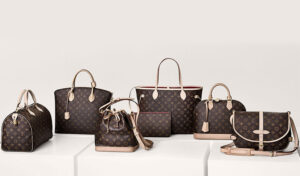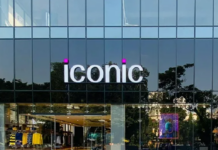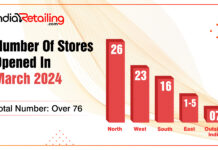For fashion retailers, the concept of exclusivity makes one of the most advantageous marketing opportunities. A recent research elaborates on this in context of today’s challenging fashion business scenario.
1Fashion and Consumerism
The Indian consumer market is broadly segregated into urban and rural markets and is attracting marketers from across the world. Fashion consciousness has been increasing across socio-economic segments as a result of the changing role of the Indian woman, increasing incomes and wider penetration of the media in the country. E-tailers are also vouching for higher demands in Tier II and Tier III cities.
The rise in the number of transactions via the mobile platform has prompted retailers and e-tailers to focus their growth efforts beyond the metros in India. It is not uncommon to find young boys and girls in smaller cities opting for the latest styles sported by their favourite television or Bollywood stars.
The reach of media and television has ensured that consumers are following fashion trends at roughly the same pace all over the country. Increased awareness coupled with geographical expansion and the growing reach of online retailers has led to an increase in demand beyond Tier I cities.
Today, a large number of international brands are present in the Indian market. Domestic and international brands together cater to every fashion desire of the new-age consumer. Right from fast fashion made affordable by brands such as Zara and United Colors of Benetton to Indian brands offering the latest trends popular in Hindi films and television soaps, the Indian consumer today is becoming increasingly fashion conscious.
While the proliferation of private labels has given an inexpensive alternative to price-conscious consumers, there is definitely a yawning gap between the demand for branded clothing and the presence of exclusive brand outlets in Indian towns. In such a scenario, retailers are rapidly expanding their store count and Internet connectivity through smartphones is expanding the reach of online retailers.
In today’s age of multi-channel retailing, Indian consumers have the luxury of choosing from a platform as per their convenience. Easy accessibility through the multiple channels has also led to a rise in the number of brands the consumer can select from according to his or her purchasing ability. While a well-travelled Indian will be familiar with international brands, the Internet and broadcasting media is contributing immensely in building consumer awareness about brands and products available not only in India but also in international markets. This has helped brands significantly in spreading their marketing campaigns to consumers in all parts of the country.
2Competition in Fashion
The retail growth story in the country has been primarily characterised by geographical expansion. The potential offered by Tier II and Tier III cities has prompted retailers to look beyond the metros. The growth prospects offered by India’s vast consumer base have attracted many Indian and international players to invest in the sector.
At present, apparel is one of India’s largest segments in organised retailing, second only to foodservice. Home-grown multi-brand retailers as well as international brands, through aggressive expansion plans, have been focusing their energies on winning in the Indian fashion retail segment. Increasing fashion consciousness and opening of newer avenues like multi-channel retailing has prompted an increase in competition.
Besides this, the online space also has a few retailers which have established themselves as names to reckon with in the fashion industry, in a relatively shorter span of time. As a result, retailers, both online and offline, are experimenting with discounts, enhanced customer experience, multi-channel presence and greater convenience for shoppers. However, they seem to be structured more or less around the same business model.
Each discount sale is steeper than its predecessor, customer engagement programmes revolve around loyalty and rewards and they all have social media pages and are also present in multiple retail channels. The retail war brought about by multi-channel retailing has compelled retail strategists to rethink their models and shift focus to creating differentiation to create an impact.
3Product Pricing and Product Mix
Each major retailer has a huge base of loyal shoppers who patronise their favourite store based on certain characteristics which are unique only to that store. These could include the style, product mix, and fit of the product among other things. Same is the case for established brands in the market. They have loyal followers who eagerly look forward to each of the brand’s new offerings. Retailers have always tried to weave in exclusivity in their products.
The introduction of private labels proved to be profitable on several fronts. These ‘in-house’ brands developed by retailers themselves proved to be more profitable with higher margins. They were also less expensive as compared to established brands and provided a sense of exclusivity to the retailers’ product offerings.
However, for brands, opening stand-alone stores or exclusive brand outlets can prove to be risky for those debuting in the country. Besides, the investment in real estate, compliance with local norms and the stringent laws governing the entry of foreign brands in the country has left global brands wary of investing in the Indian apparel industry.
With increased competition, retailers are reinventing their business models to create value which will set them apart from their competitors. Retailers, especially in the online space, finally seem to have reached a point where discounting, as a strategy, has become unviable. Stores are therefore largely relying on merchandise available exclusively in their stores.
4Why Exclusivity
Exclusivity inculcates the ‘got to have it’ factor among consumers. For the retailers, the idea of selling a product which is not available in any other store can be the basis of an extremely lucrative marketing campaign. Such a strategy can have the potential of creating a winning solution for multi-channel retailing too. The fashion industry has seen many retailers experimenting with this concept.
Shoppers Stop had an exclusive retail arrangement with Mothercare of UK to open and operate shop-in-shops of Mothercare’s department store segment within Shoppers Stop outlets in India. Shoppers Stop was also the exclusive licensee of another UK-based brand Austin Reed in the country.
New York-based women’s wear brand Candie’s is retailed exclusively through the Aditya Birla Nuvo owned Pantaloons. The Indian retailer has entered into a long-term exclusive licensing agreement with Reliance Brands Limited, the Indian JV partner of Iconix Brand Group which owns Candie’s.
Online marketplaces in India have also proved to be fitting partners to first-time brands in the Indian market. E-commerce sites have a huge user base, provide high visibility and more importantly a well-established supply chain. As exclusivity also goes a long way in attracting customers to their portal, the agreement ensures that the website invests sufficient time and efforts in building the brand’s presence in India.
Retailers have also been successful in spinning off private labels as full-fledged brands. Almost all the leading Indian retailers today have signed agreements with online marketplaces for retailing their private labels. Future Group was the first to enter into an exclusive partnership with Amazon India for jointly retailing their goods. Future Group is expected to sell more than 45 labels of its apparel segment, followed by other categories.
Exclusive distribution partnerships are a win-win for brands. Whether it is exclusive retailing through physical retail stores or online retailers, brands make a small investment vis-à-vis in joint venture or in the single brand mode of entry. They primarily save on overheads like real estate and related operating costs and end up saving on marketing costs too. Besides, it gives them the opportunity of testing the Indian market for demand with minimum investment and to learn to adapt to factors like pricing and localisation. In May 2014, the National Basketball Association announced the launch of its first store on the online marketplace Jabong in India.
5Celebrity Fashion
Celebrity fashion is followed closely in the media and on social media too. Physical stores have been capitalising on exclusive celebrity clothing lines. As part of the film’s marketing campaign, Hindi movies have been tying up with retailers for the exclusive launch of the movie’s clothing lines as affordable fashion. Shoppers Stop has launched exclusive apparel lines inspired by popular Hindi films like Om Shanti Om, Love Aaj Kal, Karthik Calling Karthik, Break ke Baad and more recently, Desi Boyz.
For the celebrities, mainly movie stars, launching clothing labels adds another feather to their hats. For the retailers, launching labels designed by celebrities not only attracts movie buffs but also the increasing fashion conscious consumers who regularly follow style trends promoted by the celebrities. Lately, online fashion retailers have also caught up with this trend.
Jabong, one of the major fashion retailers in the online space, has collaborated with the makers of the Hindi movie Dhoom 3 for the exclusive launch of its clothing line. This is Jabong’s third successful collaboration after Yeh Jawani Hai Deewani and Bhaag Milkha Bhaag.
The Hindi film industry has always been a source of inspiration for Indians and retailers have learnt to capitalise on this factor. Taking this a step forward, collaborating with a celebrity for the exclusive launch of their designer label has also gained a lot of attention. Considering the popularity of the Indian film industry, movie stars are revered and their lifestyle choices are the talk of the town.
Indian actress Alia Bhatt announced an exclusive clothing line ‘Alia Bhatt for Jabong’ for Jabong. Myntra launched Hrithik Roshan’s label HRX in 2013 and now stocks Mandira Bedi’s saree collection as well as the Vero Moda Marquee which is a limited edition collection designed by filmmaker Karan Johar in collaboration with the brand. Depending upon the brand, these collaborations could be long-term or last for one season only.
6E-commerce Players Emerging as Fashion Houses
Among the several marketplace models in the Indian e-commerce industry today, fashion retailers have been growing steadily, with a few of them also emerging profitable. Almost all of them have a wide array of private labels which bring them higher profit margins. Further, online fashion retailers have been collaborating exclusively with international brands and designers to continue appealing to the fashion conscious consumer in India. Their almost never-ending collections catering to every price range satisfy the fashion needs of consumers across the socio-economic spectrum.
The success of their private labels has prompted some of them to start retailing these private labels through other online fashion portals as well. Websites like Koovs, the Label Corp, Stylista, although being the more modest cousins in front of of giants like Myntra and Jabong, have on board their own group of celebrities and designers designing exclusively for them.
Their commercial success is evidenced from the fact that international brands are actively seeking out exclusive tie-ups for their pilot launches in India.
Furthermore, the presence of web portals at major fashion shows has clearly established them as the fashion houses of today. Physical retailers today have also recognised this potential and announced exclusive tie-ups with online marketplaces for the sale of their private labels online.
After the Future Group– Amazon India collaboration, Pantaloons has tied up with Jabong and recently Shoppers Stop announced its plans of exploring such collaborations. In the online space itself, The Label Corp has signed an agreement with Amazon India to offer products from celebrity designer labels The Closet Label and The Trunk Label.
7Lessons From Luxury Retailers
Exclusivity has long since been the forte of luxury brands the world over. From Louis Vuitton’s invitation only special VIP second-floor apartment in London to its nautical-theme-based stores accessible only by a private jetty in Singapore, exclusivity has been a vital part of the DNA in luxury retailing.
Today, one can see that the concept of exclusivity has proved to be successful for retailers and brands belonging to mid-range and premium segments. As consumerism continues to grow, retailers and brands alike will find several opportunities to test such a business model. Start-ups and new brands with little or no awareness will find that exclusive launches work well to help test the market.




